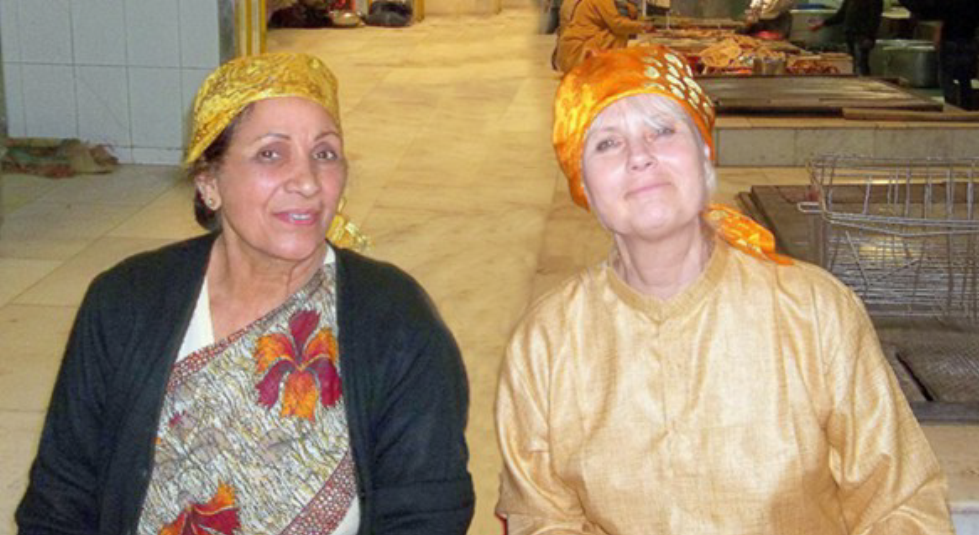Embrace Foundation Archives

CURRENT - 2014
TRAVEL AS AN INTERFAITH ACT
NEW MEXICO, USA AND INDIA
Dec 2013 - Mar.2014
The Santuario de Chimayo - December 2013
One of the very sacred places in New Mexico (USA)is El Santuario de Chimayo. The Founders wished to include this special place in CURRENT where they enjoy visiting and saying “hello” to Father Roca.
One of the very sacred places in New Mexico (USA)is El Santuario de Chimayo. The Founders wished to include this special place in CURRENT where they enjoy visiting and saying “hello” to Father Roca.
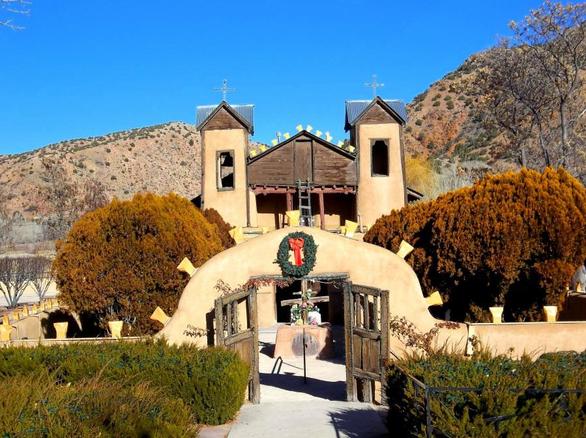
El Santuario Chimayo at Christmas with Farolitos on the Roof (Brown Paper Bags withCandles)
The Santuario’s leading inspiration is the beloved and open- hearted Father Casimiro Roca, now 95. Father Roca was sent to this far outpost of civilization (it is remote even today) from Spain.
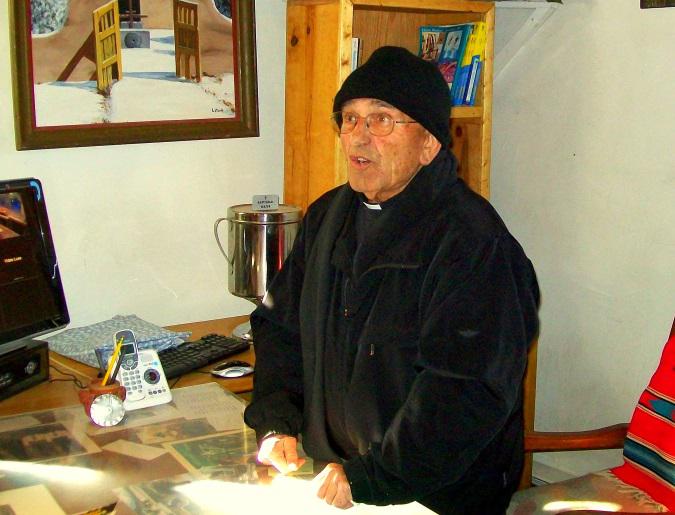
Father Casimiro Roca, S.F. - A Priest with a Big Heart
Over his many years as a priest of the Santuario, Father Roca has been responsible for saving it from natural destruction and with his loving congregation, has created a haven of beauty which embraces, not only New Mexican Hispanic culture, but also First American spirituality and culture.
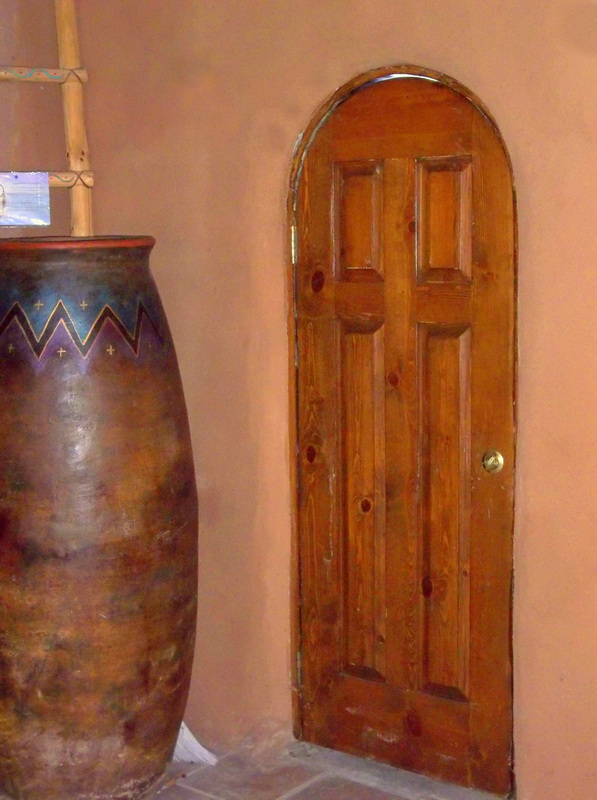
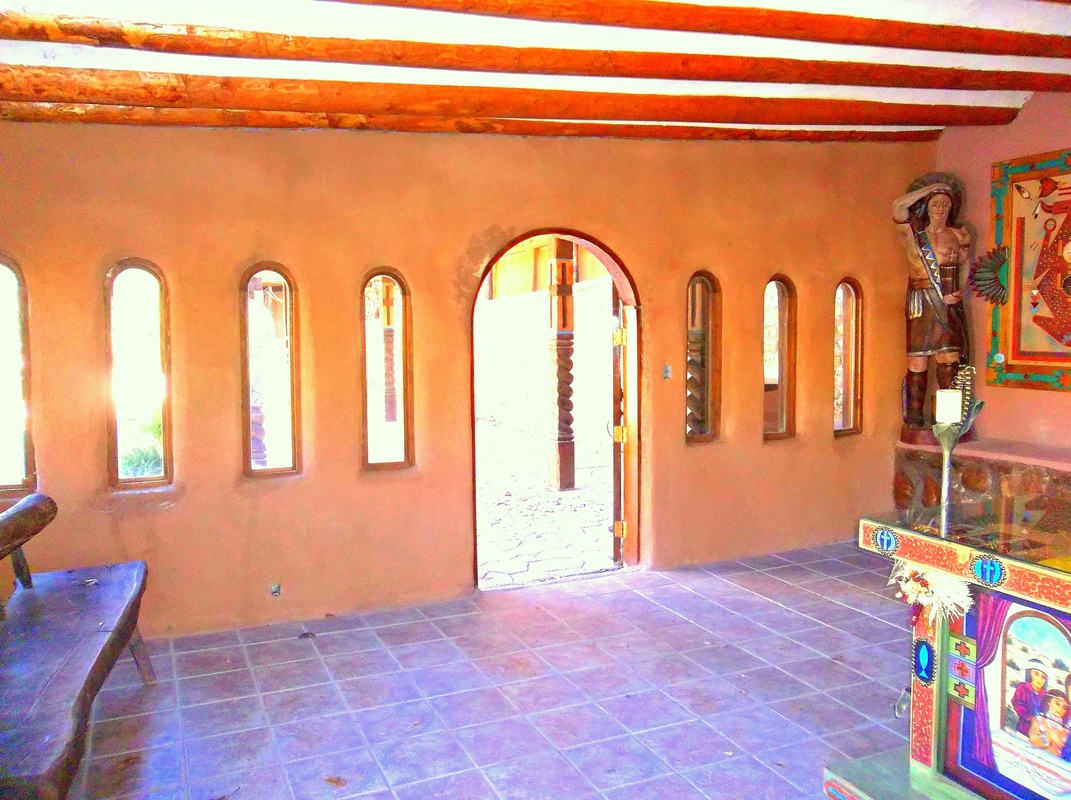
El Santuario Chimayo’s Sacred Hall of First American Traditions & Spirituality
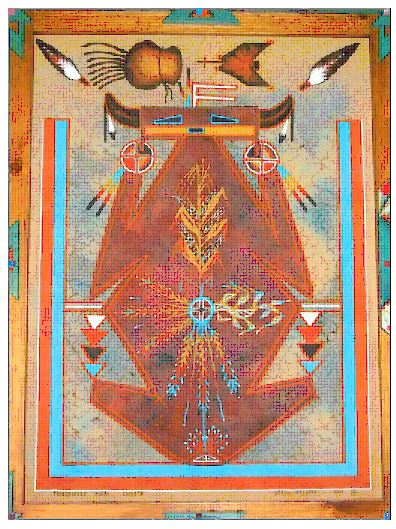
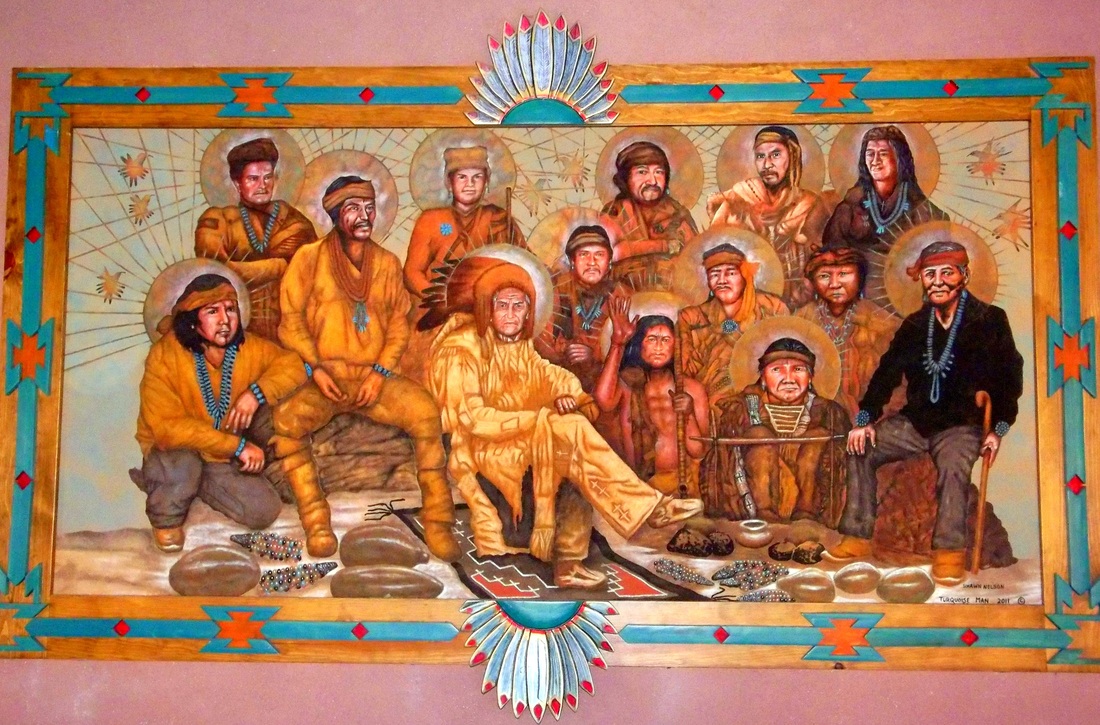
In addition, communities of Vietnamese and Mexicans now living primarily in Albuquerque, (not near the Santuario) but who wish to be included in this abode of miracles have sacred art representative of their manner of worship as well.
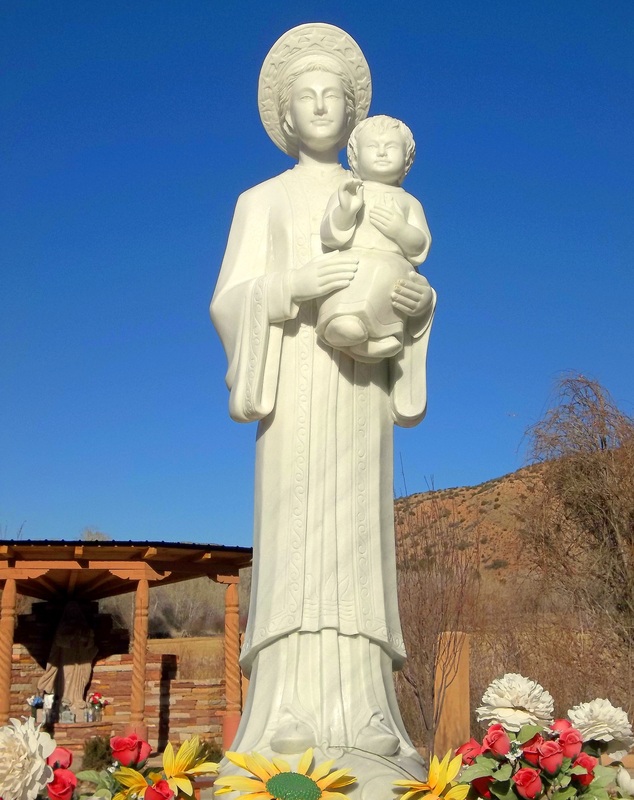
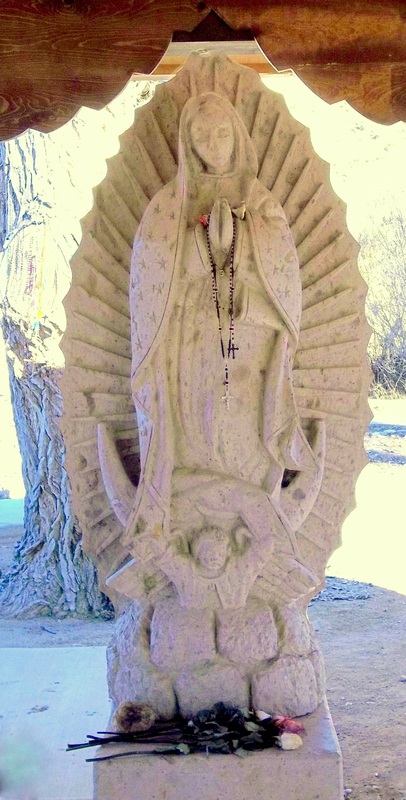
Vietnamese Madonna
Our Lady of Guadalupe
The Santuario has long been known for the healing qualities found in its’ earth which has helped many sick return to health. Occasionally, busloads of visitors from around the globe come to experience this place of many miracles. Perhaps this “Sanctuary” in its own way, is also mending hearts and healing divisions amongst people on a much wider scale.
Note:
The Santuario has an historical and mystical relationship with the Basilica of the Black Christ (Cristo Negro de Esquipulas) in Esquipulas, Guatemala. For more photos of both the Santuario and the Basilica Cristo Negro de Esquipulas go to Embrace Sacred Places.Org.
Note:
The Santuario has an historical and mystical relationship with the Basilica of the Black Christ (Cristo Negro de Esquipulas) in Esquipulas, Guatemala. For more photos of both the Santuario and the Basilica Cristo Negro de Esquipulas go to Embrace Sacred Places.Org.
NORTHERN INDIA - 2014
The Embrace Founders once again traveled to India, this time to Northern India and the lower Himalayans from mid-January until the beginning of April. India has a very long history of interfaith/ intercultural teachings coming from saints of many traditions. Photos from this trip will document some of these organizations and the people behind them.
As always our extended agenda was:
To meet with religious leaders, spiritual leaders and scholars throughout the areas we travel.
To encourage grassroots interest in organizing intercultural and interfaith events in their respective communities.
To photograph as a record, places considered sacred by the people living in these countries.
To photograph precious anthropological/ archeological sites that are vulnerable to war and ecological damage.
As always our extended agenda was:
To meet with religious leaders, spiritual leaders and scholars throughout the areas we travel.
To encourage grassroots interest in organizing intercultural and interfaith events in their respective communities.
To photograph as a record, places considered sacred by the people living in these countries.
To photograph precious anthropological/ archeological sites that are vulnerable to war and ecological damage.
Interfaith in the Lower Himalayas
The Embrace Founders have made many trips over the past 31 years to the lower Himalayas and Delhi. We wanted to revisit these locales and share photos of some of the numerous interfaith and intercultural activities that are going on.
THE DIVINE LIFE SOCIETY
(SIVANANDA ASHRAM)
(SIVANANDA ASHRAM)
Swami Sivananda the founder of the Divine Life Society has long been considered a beacon by many decades of idealists in the promotion of interfaith/intercultural values. Books such as: “Unity of Religions” published by the ashrams’ own publishing house give examples of his many speeches, writings and teachings concerning universally shared values and ideals. In 1945 Swami Sivananda founded the “All World Religions’ Federation.” In 1953 he convened a “World Parliament of Religions.” Swami Sivananda passed from his physical body in 1963.
Swami Sivananda was the Guru of Swami Satchidananda one of Embrace Foundation’s Honorary Founding Directors. Swami Satchidananda built a temple in the United States (Virginia) especially designed so that people of all religions could pray there in their own manner.
Swami Sivananda was the Guru of Swami Satchidananda one of Embrace Foundation’s Honorary Founding Directors. Swami Satchidananda built a temple in the United States (Virginia) especially designed so that people of all religions could pray there in their own manner.
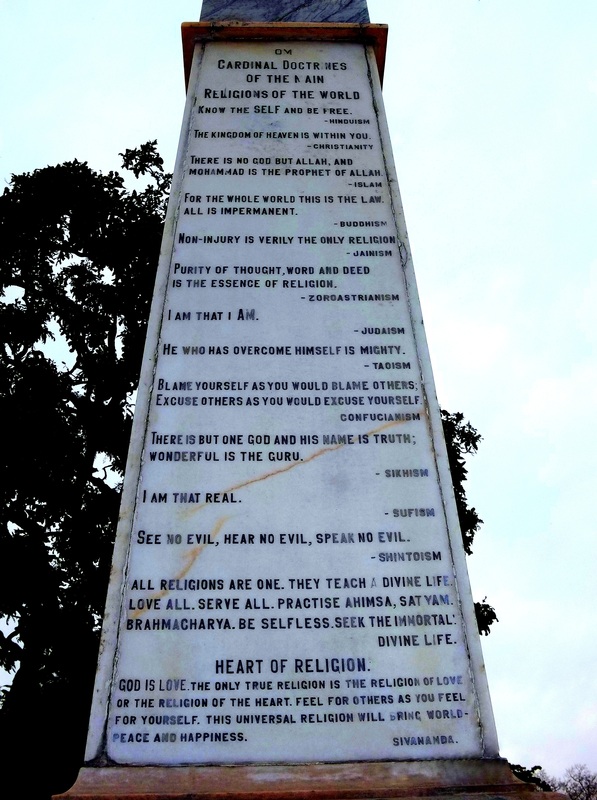
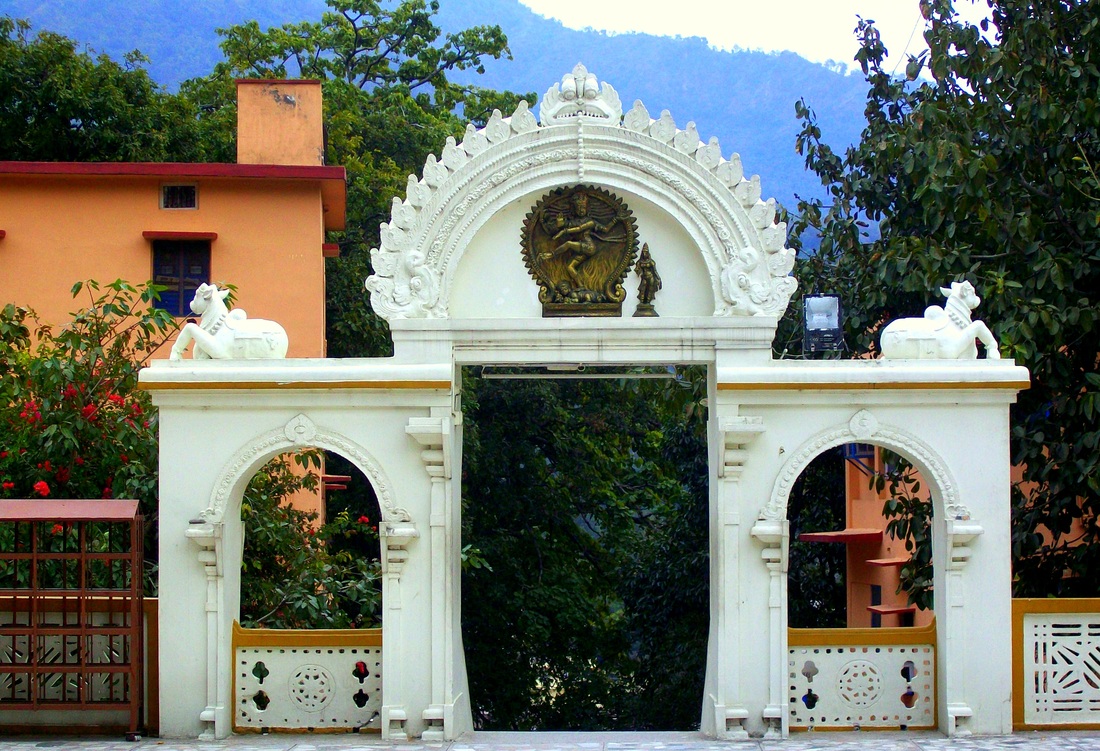
This Monument to Interfaith Ideals stands in the Courtyard of The Divine Life Ashram - Hrishikish
AN INTERRELIGIOUS ASHRAM
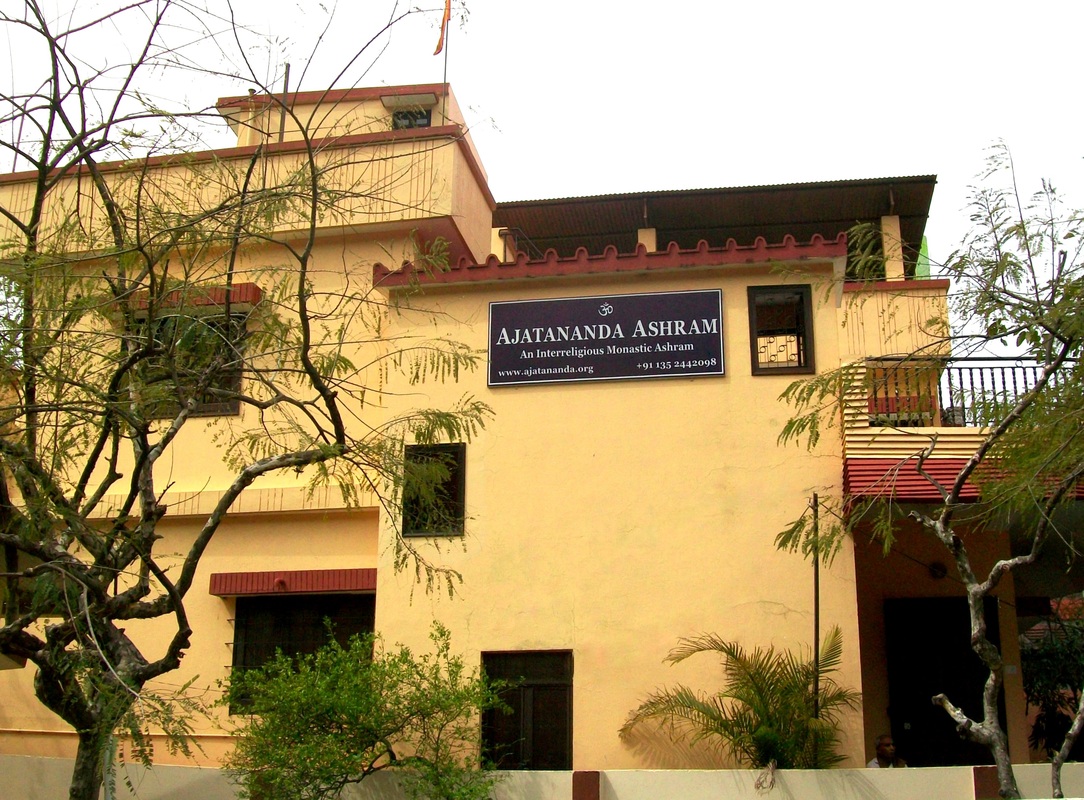
Ajata and Virginia were delighted to have lunch at the Ajatananda Ashram with Swami Atmananda, several of the ashram’s Brahmacharis (novices) and Silvana Panciea and Piere Giorgi of Centro Europeo in Italy. The Ajatananda Ashram is a unique practising interreligious ashram located in Hrishikish. The Founder of the ashram has his roots in both the rigourous Eastern philosophical system of Vedanta and in Eastern and Western mysticism. A visitor will find photos throughout the ashram of saints from all religions who have lived in India and contributed to India’s rich spiritual heritage; Hindu, Sufi, Christian, Buddhist, Sikh, Jain, etc. There are also quotes from many spiritual and religious leaders to be found posted and hanging throughout the ashram.
L-R Ajata (Embrace), Swami Atmananda, (Ajatananda Ashram Founder), Brahmachari Siddhartha, Piero Giorgi & Silvana Panciera
For those living outside of India who may be interested in visiting and learning more about the Ajatananda Ashram, you will find Swami Atmananda (the founder) is intellectually astute, as well as a devotee of the One.
For more information about the: Ajatananda Ashram
For more information about the: Ajatananda Ashram
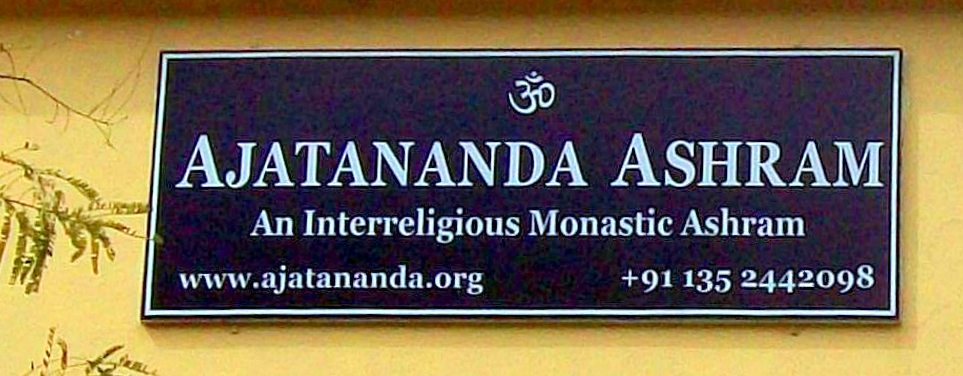
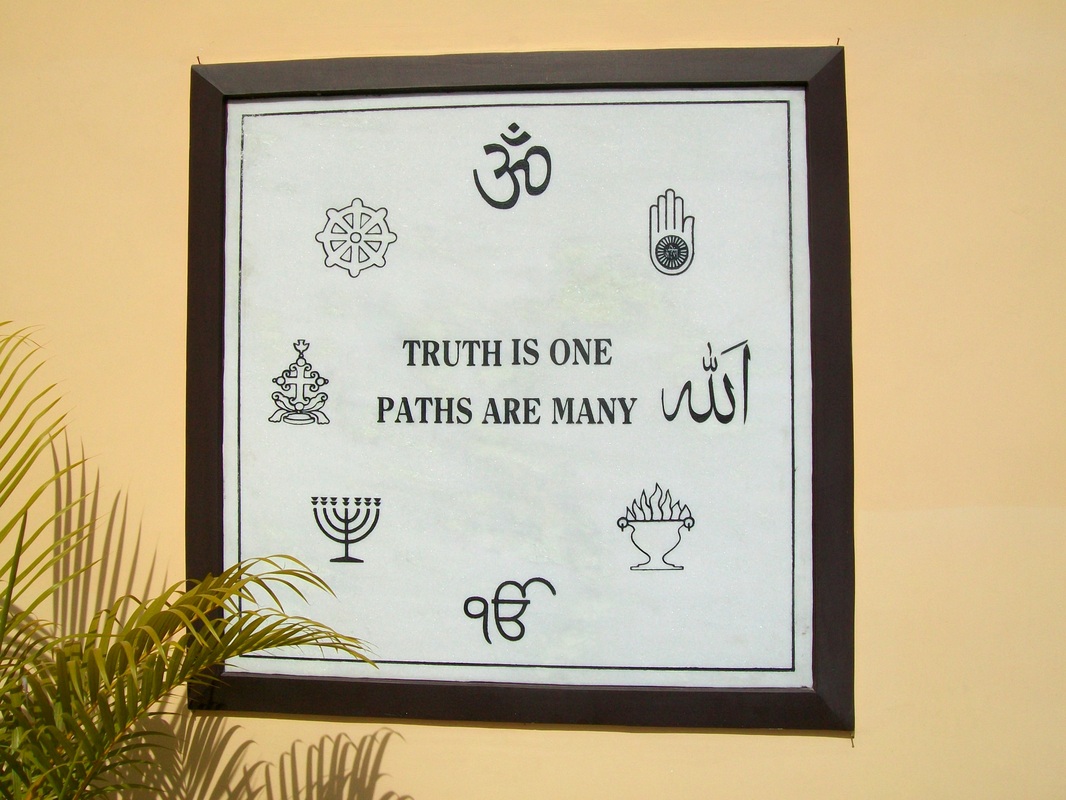
Silvana Panciea and Piere Giorgi who were visiting the Ajatananda Ashram while the Founders were there, are idealists and humanists who have taken over a magnificent monastery in Northern Italy and turned it into a retreat - special programs center for those who are working to improve our world.
For further information about: Centro Europeo
For further information about: Centro Europeo
YOGA FESTIVAL - ENVIRONMENTAL CONSCIOUSNESS
A Large International Yoga Festival was held the first week of March at the Paramartha Niketan Ashram in Hrishikesh. This is the ashram that sponsors arati (ritual prayers) every evening on the Ganges, often aired on Indian television. A majority of Westerners organized and attended the festival. For those who are not familiar with Hatha yoga, this yoga is not a religion but a series of practices that can be done regardless of religious belief, or non-belief.
Part of the Yoga Festival included awakening environmental activism in India.
India is facing a nationwide environmental and conservation crisis. The ever growing population and unsupervised and unrestricted development has not only destroyed forests, wildlife and the safety of water supplies, but has also impacted the quality of life everywhere in India. At the Northern End of Hrishikish is a lovely waterfall. The villagers told us that a resort hotel (these are small affairs in this area and unregulated) will be built over the falls thus guaranteeing sewage and garbage being dumped over the falls.
Hrishikish’s Threatened Waterfalls - GOOD NEWS (See People Taking Action at the Bagsu Nag Water Falls Below)
BUT YES!!! THERE IS GOOD ECOLOGICAL NEWS!
GOOD NEWS!: Levi Jeans, India has invented a way to use 8 plastic bottles to make one pair of Levis. We think this is brilliant and hope this innovative type of thinking multiplies a million fold.
MORE GOOD NEWS!: The highly polluting but much loved motor rickshaws are rapidly being upgraded and electrified. No pollution and more people can go at one time to the same destination (such as a Metro stop.) One mid-sized vehicle can hold from 4 to 6 people. We promise you won’t miss the lead gas fumes.
DON’T FORGET!: The Delhi metro has had a major impact on reducing pollution.
EVEN MORE GOOD NEWS!: Conscientious developers, merchants and Indian citizens who love nature are beginning to take on India’s massive litter and environmental problems. Here are some examples below from Bagsu Nag:
The Following are sponsored by Fortis Hospital & Waste Warriors.Org. at the Bagsu Nag Water Falls.
GOOD NEWS!: Levi Jeans, India has invented a way to use 8 plastic bottles to make one pair of Levis. We think this is brilliant and hope this innovative type of thinking multiplies a million fold.
MORE GOOD NEWS!: The highly polluting but much loved motor rickshaws are rapidly being upgraded and electrified. No pollution and more people can go at one time to the same destination (such as a Metro stop.) One mid-sized vehicle can hold from 4 to 6 people. We promise you won’t miss the lead gas fumes.
DON’T FORGET!: The Delhi metro has had a major impact on reducing pollution.
EVEN MORE GOOD NEWS!: Conscientious developers, merchants and Indian citizens who love nature are beginning to take on India’s massive litter and environmental problems. Here are some examples below from Bagsu Nag:
The Following are sponsored by Fortis Hospital & Waste Warriors.Org. at the Bagsu Nag Water Falls.
Don’t Throw Rubbish Any More!
Water Is Precious Don’t Pollute It!
DELHI - India
The Sikh Dedication to Feed the Hungry All Day and Night
(An Intercultural Shared Experience)
The Sikh Dedication to Feed the Hungry All Day and Night
(An Intercultural Shared Experience)
Bangla Sahib Gurdwara - Delhi, India
Srimati Lata Mehtaji , a friend of Embrace and of the Embrace’s Founders had wanted to take Ajata and Virginia on their previous visits to Delhi, to the Sikh Bangla Sahib Gurdwara. This February she did so. The Gurdwara has a sacred well with healing waters but the most meaningful thing about the Gurdwara is that it feeds anyone who comes to the Gurdwara and is hungry, all times of the day or night, without regard to any religious, class, caste or racial differences and without any questions. This practice of feeding the hungry 7 days a week is an integral part of the Sikh tradition but not all Gurdwaras can do it on this huge scale or for nearly 24 hours a day.
Mrs. Lata Mehtaji & Virgina (Embrace) In the Gurdwara Kitchen
Gurdwara Kitchen
THE BAHA’IS
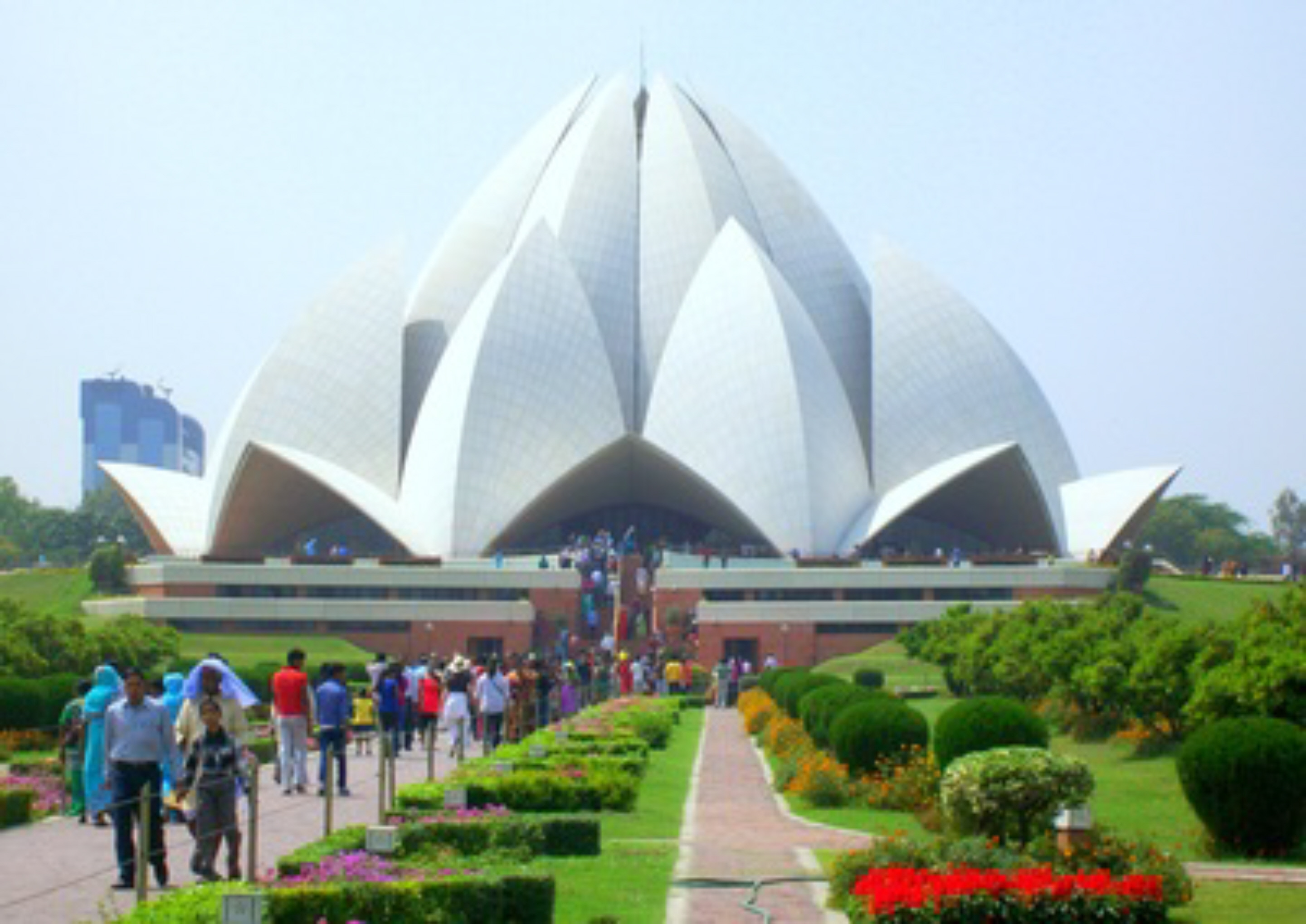
The Baha’i Lotus Temple in Delhi
The Baha’i Temple in Delhi is incredibly popular as a day outing among Indians of all faiths. It is phenomenal to see hundreds of people constantly lining up for a chance to visit this temple. No doubt the lovely well-kept, grounds and the pools of crystal clear water surrounding the temple are among the attractions for those visiting. However, most importantly no one is shy because all know they are welcome. Among sight-seers, were many traditional Muslim couples. Smiling young women in black abayas requested that they get their
pictures taken by their husbands, brothers and sisters in front of the following sign:
pictures taken by their husbands, brothers and sisters in front of the following sign:
It Says: The essence of all the Messengers of God is one and the same. - Baha’u’llah
THE SUFIES IN DELHI
A Long History of Inter-Religious Dialogue
A Long History of Inter-Religious Dialogue
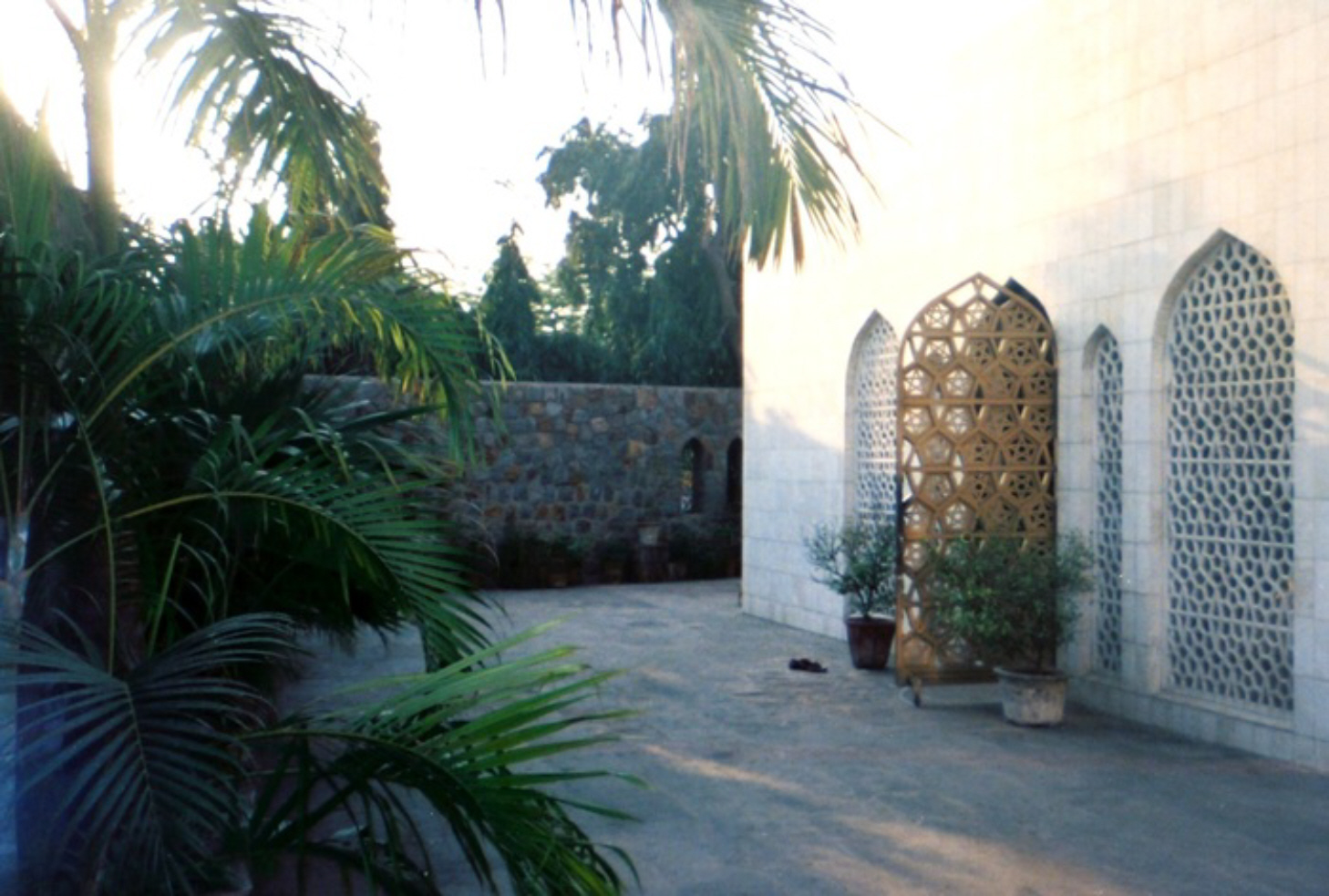
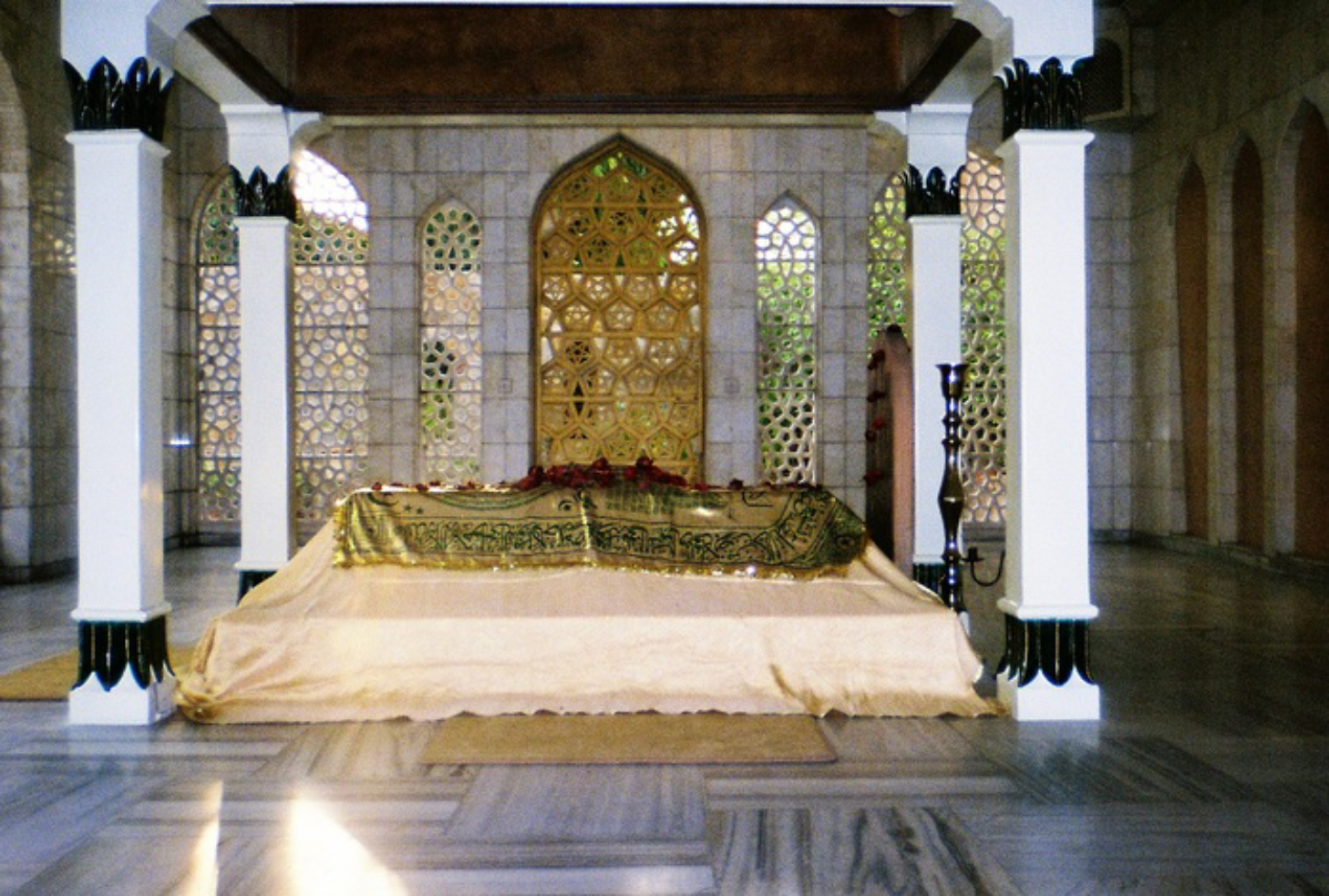
Dargah of Murshid Hazrat Inayat Khan
The dargahs of Hazrat Nizamuddin Aulia and Hazrat Inayat Khan of the Chishti order (or Chishtiyaa) are major pilgrimage places for people from all over the sub-continent and many from Western Nations for Hazrat Inayat Khan, since he spent many years in Europe and America. These shrines are a distance apart of about 5 minutes.
The founder of the Chishti Order Khwaja Moinudeen Chishti of Ajmer, India (1142-1236 ) strongly advocated the shared spiritual ideals between Hindus and Muslims, particularly in reference to the Beautiful Names describing the Beloved, Allah (or Khuda, in Farsi / Urdu which is mostly spoken by Muslims on the subcontinent) and the various Hindu Gods and Goddesses representing different aspects of the One Brahman or Parmatman.
The founder of the Chishti Order Khwaja Moinudeen Chishti of Ajmer, India (1142-1236 ) strongly advocated the shared spiritual ideals between Hindus and Muslims, particularly in reference to the Beautiful Names describing the Beloved, Allah (or Khuda, in Farsi / Urdu which is mostly spoken by Muslims on the subcontinent) and the various Hindu Gods and Goddesses representing different aspects of the One Brahman or Parmatman.
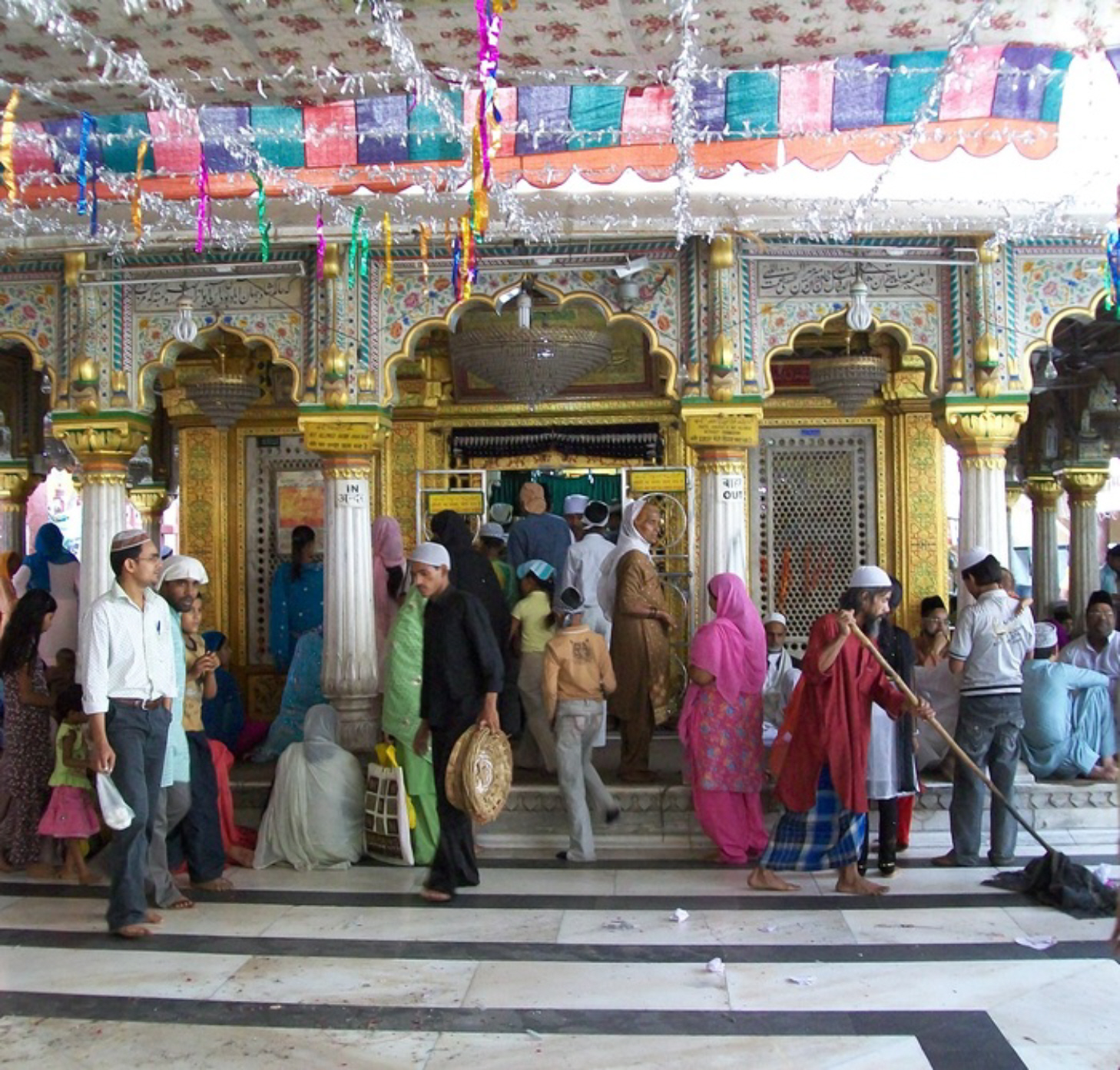
Dargah of Saint Hazrat Nizamuddin Aulia
The Nizamuddin Aulia Dargah is visited by thousands of people every day from every religion on the Indian sub-continent. On Thursdays & Sundays there is feeding of people who are hungry and visitors. The food is made purely vegetarian because many of the people visiting are: Hindus, as well as, Muslims, Sikhs, Christians and others.
Hazrat Inayat Khan wrote and taught extensively on the universal truths and ideals of the worlds’ religions. Although, these teachings penetrated a large majority of his talks, classes and writings, the volume of his work entitled “The Unity of Religious Ideals” consolidates many of the primary teachings in this area. Hazrat Inayat Khan’s son Pir Vilayat Inayat Khan is one of the Honorary Founding Members of Embrace Foundation and until his death was a strong proponent of “Unity within Diversity.” He used to say that “Unity is not Uniformity.”
Hazrat Inayat Khan wrote and taught extensively on the universal truths and ideals of the worlds’ religions. Although, these teachings penetrated a large majority of his talks, classes and writings, the volume of his work entitled “The Unity of Religious Ideals” consolidates many of the primary teachings in this area. Hazrat Inayat Khan’s son Pir Vilayat Inayat Khan is one of the Honorary Founding Members of Embrace Foundation and until his death was a strong proponent of “Unity within Diversity.” He used to say that “Unity is not Uniformity.”
THE DALAI LAMA, TIBETAN CULTURE
His Holiness the Dalai Lama was one of the first religious leaders that Ajata and Virginia went to visit after they conceived of the idea for Embrace Foundation in Gangotri, India in 1982. This of course, was long before the Dalai Lama received the Nobel Peace Prize. The Tibetan Community has from the inception of Embrace participated wholeheartedly in our interfaith/ intercultural activities. For 16 years Ajata and Virginia were unable to attend any audiences or talks by the Dalai Lama, so they looked forward this year to hearing him give one of his annual talks to the Tibetan Community in Mcleod Ganj.
At the talk, Virginia sat next to a Vajrayana Buddhist woman and her daughter who had come to see His Holiness from Russia. The mother began crying at the end of the talk while she watched the Dalai Lama pass by. Many people around the world think of the Dalai Lama as only the spiritual leader of the Tibetan people, but he is also very much revered in: Mongolia, Sikkim, Nepal, Bhutan, parts of Burma and a small area of Buddhists in South-West Russia.

The Dali Lama instituted elections a few years ago, so that now the Tibetan Diaspora has a democratically elected government representing them. McLeod Ganj, the heart of the Tibetan Refugee community, has changed a great deal since the early days, as traffic has escalated on streets that can barely accommodate pedestrians. This is making life very hard on everyone whether visiting, working or living there. It is hoped by just about everyone that vehicles will be parked at the bottom of the mountain and luggage and people will be brought up by small electric motor rickshaws to both Mcleod Ganj and adjacent Bagsu Nag.
The compassion long exhibited by the Tibetan people has made itself felt with even more refugees coming in over the years from Kashmir and Afghanistan. These refugees have fled to the safety in McLeod Ganj from terrible wars and violence. In Mcleod Ganj refugees who had little hope have been made to feel safe and welcome.
The compassion long exhibited by the Tibetan people has made itself felt with even more refugees coming in over the years from Kashmir and Afghanistan. These refugees have fled to the safety in McLeod Ganj from terrible wars and violence. In Mcleod Ganj refugees who had little hope have been made to feel safe and welcome.
NORBULINGKA INSTITUTE
The Norbalingka Institute preserves the traditions and crafts of the Tibetan people. If you would like to see a demonstration of woodworking or Tanka painting for example, there are crafts people and artisans that you can watch. The whole institute is a reconstruction of the Dalai Lama’s Summer Retreat in Tibet, with lush botanical landscaping and grounds.
Since 2010, the Embrace Founders have travelled extensively to: Lebanon. Syria, Jordan, UAE, Oman, Sikkim (India), Ethiopia, South India, Egypt and Ghana to bring interfaith/ inter-cultural education to people both East and West and to bring the Truth of what is going on in many countries since the Western Broadcast Media does not do so. For information about our previous travels, please visit - CELEBRATE HUMANITY
